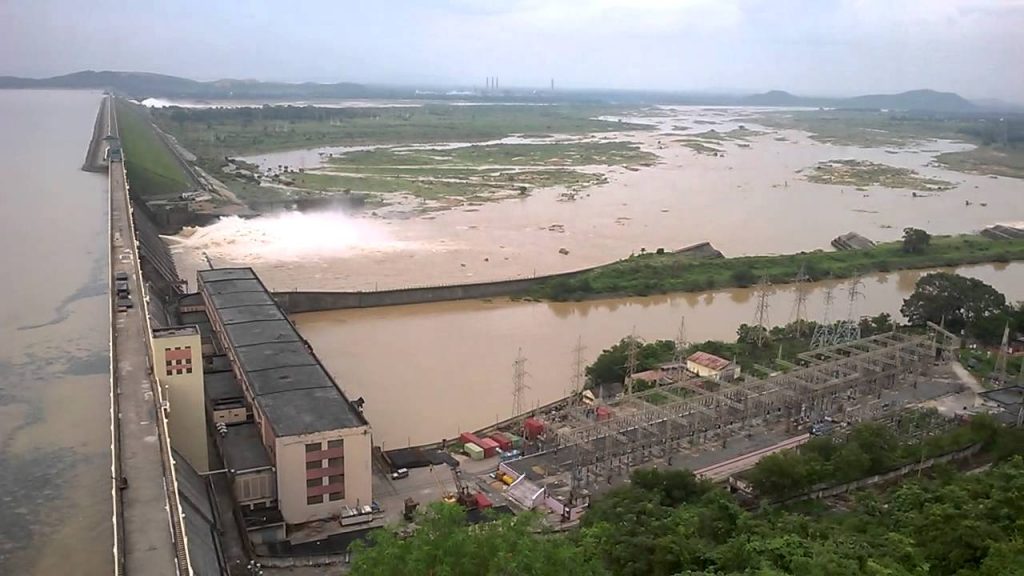Asgar Ali Mohammad
The Mahanadi river water dispute reminds one of the fable in which a monkey deceives two cats he finds quarrelling over a slice of bread. By the time the cats realize the monkey had swindled them, their bread was eaten and the simian had made good his escape. In the Mahanadi dispute, Odisha and Chattisgarh are the cats and industrialists the monkey.
Mahanadi is the lifeline of people of Chhattisgarh and Odisha. But the state governments are determined to increase allocation of water to industries and do not seem to be concerned about making water available for agriculture and domestic needs. Both states rank far below national average of 50 per cent in irrigation and two-thirds of their land is still not irrigated.
Excessive industrialisation of the last decade has made things worse. Forest degradation, mining and industrialisation, and coal-fired power generation plants in the basin, of late, have affected not only water flow but also health of the basin. In real terms, we can say Mahanadi is the only major river of the country which has been completely privatised.
To get resources for cheap from the government industrialists fund political parties, especially during the elections; it may be a win-win for the governments and industrialists, but not for farmers.
We have not learned lessons from how the British East India Company cleverly used Indian states by conspiring with the weaker and opportunistic rulers and trounced powerful kings to take control of India. Traditionally BJP is pro-capitalist; so, it was easier for big corporations to exploit resources of Chhattisgarh rather than Odisha. The pro-capitalist policy of the last BJP government of Chhattisgarh is clear as no provision for irrigation has been made from the barrages it is currently building. These barrages will supply water to power generating private industries while the state is being starved of water for drinking and irrigation.
The central government, too, is anti-farmer and tried to dilute the “Land Acquisition Bill” and enacted a policy that benefits insurance companies.
Instead, the government should have undertaken comprehensive studies to ensure that new structures do not affect the basic character of a river; the present illegal industrial water use should be immediately stopped; environmental clearance for polluting industries must be cancelled.
Also, water cess is peanuts despite rate revisions in 2003. Process water is priced at 20-30 paise per kilo-litre (KL) while industrial cooling water is only 10 paise per KL. At this price cooling water cess will constitute 1-2 per cent of the turnover and process water cess will constitute 0.02-0.05 per cent of the turnover. But water is priced much higher in other countries such as the UK (Rs90/KL); Canada (Rs76/KL); France (Rs42/KL); and USA (Rs21/KL). Groundwater is free, though.
Industrial water use is growing at the fastest rate but there is no systematic effort to price water accordingly, which makes industry highly water inefficient. For every cubic metre of water consumed, the industrial value addition in India is just $7.5 compared with $96 in South Korea, $92 in Sweden and $49 in Thailand.
Mining consumes a large quantity of water. Iron ore mines consume anywhere between 500 and 800 litres of water per tonne of ore extracted. To extract a million tonnes of iron ore, mines consume water equivalent for the annual needs of 30,000 people, considering average per capita human consumption of water is 55 litres a day.
What oil was to the 20th century, water promises to be for the 21st century, a commodity that will determine the wealth of a nation, water will be the next gold. Our government propagated a misconception that “angel investors” can transform our natural resources into gold and help us eradicate poverty or the socio-economic condition of citizens, but fact is big corporates don’t care about the environment or human rights and their sole objective is to take full advantage of the cheap resources and maximize profit.
Industry exploits natural resources, polluting the environment; but is it contributing enough? Has socio-economic status of the poor improved significantly in Odisha and Chhattisgarh?
The writer is a social activist and member, Navnirman Krushak Sangathan.

